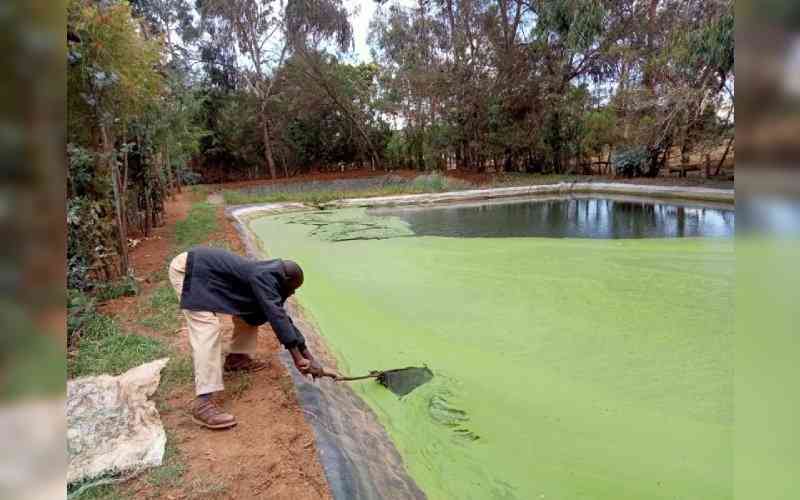×
The Standard e-Paper
Kenya’s Boldest Voice

Misheck Muthomi in a section of his five-acre farm in dry Buuri Sub County, Meru. [Phares Mutembei, Standard]
At any given time, a minimum of 2.8 million litres of water are stored in various facilities in Misheck Muthomi's five-acre farm at Ngusishi, Timau in Meru County.